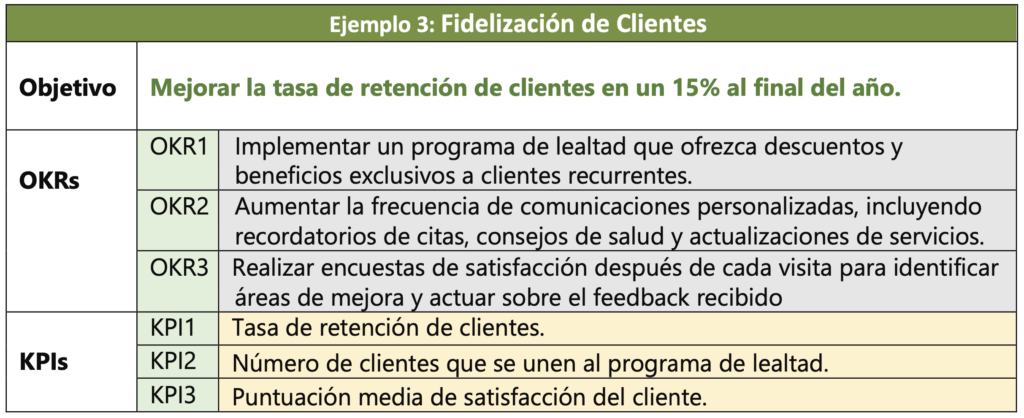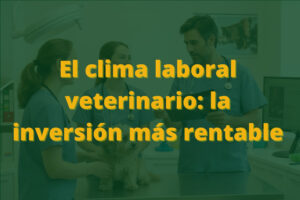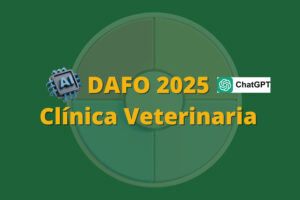Efficient management of a veterinary practice requires a clear and orderly strategy.
💡 How can a clinic not only survive but thrive in this competitive environment?
The answer lies in implementing a goal-oriented approachwhere every decision and action is aligned with specific goals. In this context, the implementation of Objectives and Key Results (OKRs) emerges as a crucial strategy, complementing Key Performance Indicators (KPIs) to enhance effectiveness and success.

Veterinarian and manager deciding "the best path" for your clinic (VMA Team)
What are OKRs?
Originated at Intel and popularized by Google, OKRs are a management system that promotes the setting of clear and measurable objectives.
Unlike KPIs, which measure current performance toward ongoing goals, OKRs focus on setting and achieving specific objectives within a specific timeframe, driving innovation and growth.
The combination of the two systems allows veterinary clinics not only to measure their performance but also to drive significant progress.
Benefits of Implementing OKRs in Veterinary Clinics
The adoption of OKRs in veterinary management brings with it multiple advantages:
- Improved operational efficiency: Establishing clear and measurable objectives helps to identify and prioritize actions that directly contribute to the clinic's success.
- Promoting transparency and collaboration: By sharing common objectives, the clinic team becomes better aligned, working together towards common goals.
- Alignment of objectives and team motivation: OKRs clarify the purpose of daily tasks, linking them to broader objectives, which increases staff motivation and satisfaction.
Practical example: the step-by-step process to implement OKRs in your Veterinary Practice
Let's move from theory to practice. The combination of OKRs and KPIs is applicable to almost 100% of our objectives.
First, let's think about the fact that each veterinary center must reflect on what are their specific and priority objectives for the coming months. These objectives must be attractive and agreed upon by the team. The priority objectives must directly or indirectly benefit the team itself so that motivation and individual purpose are never lacking.
Our examples are relatively generic, but we hope that you can make them even more concrete and apply them to your veterinary practice:



Review and adjustment of our plan
OKRs should be reviewed quarterly to assess progress and make any necessary adjustments. Depending on the KPIs chosen, the review is likely to be monthly and quarterly.
The market is changing and the situation of the industry and your own practice can fluctuate, so medium- to long-term goals will not be easy to meet.
Problem: Imagine you want to launch 2 new services in the quarter but cannot find qualified staff to meet your target or you want to increase % of new customers, but your competition launches a successful campaign. Low Price that influences your target.
Successful Implementation
From VMA we give you some basic tips for a successful OKR implementation
- Involve the entire team from the beginning: Team participation in the OKR definition process is essential for success.
- Opt for simplicity: Less is more and therefore, the objectives and key results must be clear and concise for the whole team to understand and commit to.
- Uses Management Software appropriateSpecific tools can help monitor the progress of your OKRs and keep the team aligned.
- Study your strengths and weaknessesKeep in mind that to improve your target numbers you will have to "pull in a lot of resources". Some of them economic, others of staff coordination, but many of them will require you to train and change your staff, orienting them towards a more commercial version, improving their communication skills, empathy with customers, resilience and other soft skills.
Conclusion
The implementation of OKRs, together with KPIs, in the management of veterinary clinics not only improves operational efficiency and customer satisfaction, but also motivates the team, aligns efforts and promotes a collaborative work environment.
Getting started with OKRs may seem challenging, but the long-term benefits for your veterinary practice are invaluable. Take the first step toward more effective management and a more prosperous future for your practice.
VMA Team








